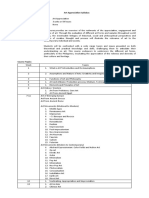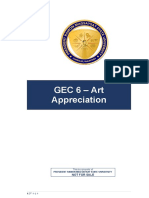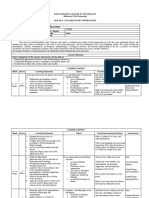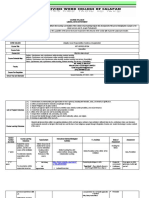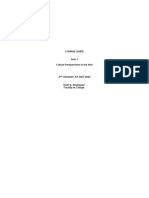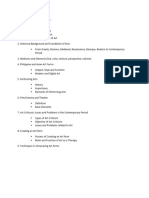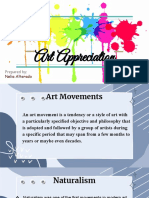0% found this document useful (0 votes)
34 views4 pagesArt Appreciation Module
Art Appreciation is the study of various art forms aimed at understanding human creativity across cultures and time. It encompasses elements and principles of art, major art forms, and the historical evolution of art, while encouraging critical thinking and personal reflection. Engaging with art deepens appreciation for cultural heritage and social values, fostering personal growth and empathy.
Uploaded by
tongquinCopyright
© © All Rights Reserved
We take content rights seriously. If you suspect this is your content, claim it here.
Available Formats
Download as DOCX, PDF, TXT or read online on Scribd
0% found this document useful (0 votes)
34 views4 pagesArt Appreciation Module
Art Appreciation is the study of various art forms aimed at understanding human creativity across cultures and time. It encompasses elements and principles of art, major art forms, and the historical evolution of art, while encouraging critical thinking and personal reflection. Engaging with art deepens appreciation for cultural heritage and social values, fostering personal growth and empathy.
Uploaded by
tongquinCopyright
© © All Rights Reserved
We take content rights seriously. If you suspect this is your content, claim it here.
Available Formats
Download as DOCX, PDF, TXT or read online on Scribd
/ 4










